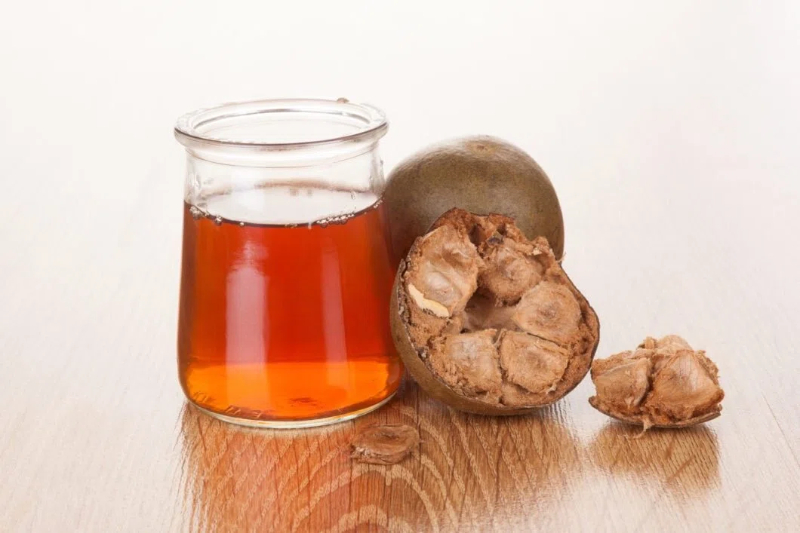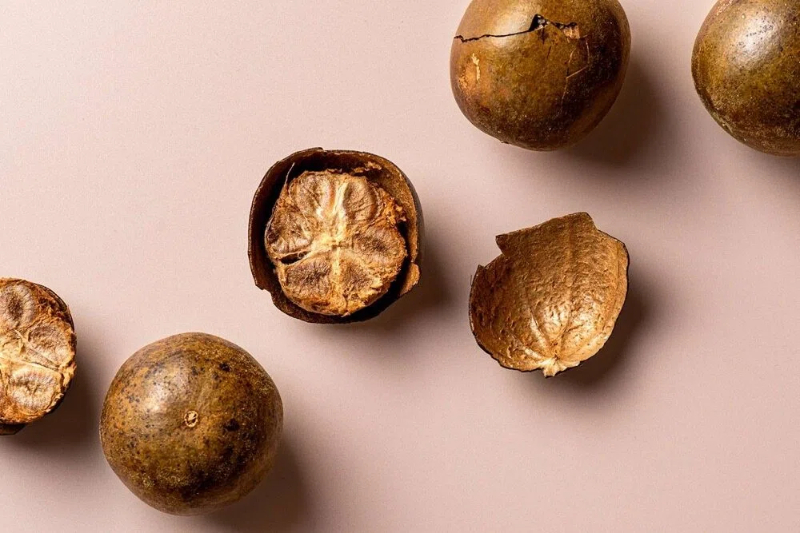Views: 222 Author: Sara Publish Time: 2025-11-19 Origin: Site








Content Menu
● How Is Monk Fruit Sweetener Made?
● Is Monk Fruit an Artificial Sweetener?
● Benefits of Monk Fruit Sweetener
● Applications in Food, Beverage, and Healthcare Industries
● How Does Monk Fruit Compare to Other Sweeteners?
● Potential Considerations and Safety
● Expanded Insight into Monk Fruit Production
● Frequently Asked Questions (FAQ)
>> 1. Is monk fruit sweeter than sugar?
>> 2. Does monk fruit affect blood sugar levels?
>> 3. Can monk fruit be used in baking and cooking?
>> 4. Is monk fruit safe for children and pregnant women?
>> 5. How does monk fruit differ from artificial sweeteners?
Monk fruit has surged in popularity as a natural and healthy alternative to conventional sugars and artificial sweeteners. However, many people wonder: is monk fruit considered an artificial sweetener? This article explores the nature, production, health benefits, and uses of monk fruit sweeteners to clarify this question and shed light on why monk fruit stands apart from artificial options.

Monk fruit, also called Luo Han Guo, is a small, round fruit native to southern China. It has been used for centuries in traditional Chinese medicine and cooking. The sweetness of monk fruit comes from natural compounds called mogrosides, which are intensely sweet antioxidants present in the fruit's flesh. Mogrosides are estimated to be 100 to 250 times sweeter than common table sugar yet contain no calories or carbohydrates.
The production of monk fruit sweetener involves several precise steps rooted in natural extraction processes. After harvesting ripe monk fruit by hand, the fruit is thoroughly cleaned and dried to remove moisture. The dried fruit is then crushed to release the sweet juice.
This juice undergoes multiple extraction and purification stages. Initially, crushed fruit pulp is infused with hot water to leach out mogrosides and natural sugars in a gentle, all-natural process. The mixture is filtered to separate clear sweet juice from solids, including peel and seeds.
Next, the sweet juice is concentrated, typically using vacuum evaporation or low-temperature drying methods, to maintain the sweetness and potency of mogrosides. The concentrated extract is spray-dried to produce a fine, powdery form that can be conveniently stored and transported.
Specialized processing technologies such as ultrasonic cold-water extraction and enzyme-assisted extraction are used by some manufacturers to optimize mogroside yield and quality while reducing environmental impact. The final products vary in mogroside concentration, with some extracts standardized to contain 25-50% mogroside V, the most potent sweetening compound.
Monk fruit sweetener is not considered an artificial sweetener. The key distinction lies in its origin and production. Artificial sweeteners—like aspartame, sucralose, and saccharin—are synthetic chemical compounds produced in laboratories. In contrast, monk fruit sweetener is derived naturally from fruit without chemical synthesis or artificial modification.
The US Food and Drug Administration (FDA) recognizes monk fruit extract as Generally Recognized As Safe (GRAS), specifying it as a natural food additive. Its purity and safety profile reinforce its classification as a natural, non-artificial sweetener.
Monk fruit sweetener offers remarkable benefits that appeal to consumers and manufacturers looking for healthier sugar alternatives:
- Zero calories: It provides intense sweetness without adding caloric intake, aiding weight management.
- Diabetic-friendly: Unlike sugar, it does not raise blood glucose or insulin levels.
- Natural origin: Derived from fruit, it fits clean-label and natural product trends.
- Heat stable: Suitable for baking, beverages, and cooking.
- FDA approved: Regarded safe for all consumers, including children and pregnant women.

Monk fruit sweeteners are increasingly incorporated across sectors:
- Food: Used in baked goods, desserts, confectionery, and dairy products to reduce sugar content while maintaining sweetness.
- Beverages: Added to soft drinks, teas, juices, and functional drinks that cater to health-conscious consumers.
- Healthcare: Included in nutritional supplements, medical foods, and dietary fibers tailored for health management.
- OEM/ODM: Customized monk fruit blended sweeteners and tablet production are common services offered by factories to global clients seeking innovative healthy formulations.
| Sweetener Type | Source | Caloric Content | Sweetness Compared to Sugar | Natural vs Artificial | Typical Uses |
|---|---|---|---|---|---|
| Monk Fruit | Fruit extract | 0 | 100-250x | Natural | Food, beverages, supplements |
| Aspartame | Synthetic | 0 | 200x | Artificial | Diet sodas, sugar-free gums |
| Sucralose | Synthetic | 0 | 600x | Artificial | Baked goods, beverages |
| Stevia | Plant extract | 0 | 200-300x | Natural | Food, beverages |
| Table Sugar | Cane/beet | 4 kcal/g | 1x | Natural | Widespread |
Monk fruit extract has an excellent safety record with no known adverse effects from pure forms. However, consumers should check ingredient labels as some products blend monk fruit with other sweeteners or fillers that may affect quality or safety. Although monk fruit does not have an established Acceptable Daily Intake (ADI), moderation is encouraged as part of a balanced diet.
Monk fruit's natural compounds may rarely cause allergic reactions in sensitive individuals. Careful sourcing and processing ensure consistent, high-quality monk fruit extract free from impurities.
The harvesting of monk fruit is highly seasonal, occurring once a year in select regions of China. Fruits are handpicked at their peak ripeness to ensure maximum mogroside content and optimal sweetness. After collection, the fruits are quickly transported to processing facilities.
In the factory, they undergo washing and drying before crushing. The crushed fruit is steeped in hot water to create a sweet infusion, which is then filtered multiple times to remove particulate matter such as pectin and proteins that could affect taste and clarity.
Technological advances in extraction methods have improved efficiency and environmental friendliness. Ultrasonic-assisted extraction and enzyme-assisted processes allow more mogrosides to be extracted at lower temperatures, preserving flavor and nutrients.
The concentrated sweet juice is often vacuum evaporated to concentrate the sugars without heat damage. Spray drying transforms the liquid concentrate into a stable powder form, convenient for dosing and shelf storage. Some manufacturers manipulate mogroside concentration levels offering premium grades with higher purity for specialty food and pharmaceutical applications.
The entire production chain emphasizes minimal processing to maintain the natural integrity of monk fruit's sweetness and healthful compounds. Standards for quality control ensure the absence of harmful contaminants and consistent sweetness profiles.
Monk fruit sweetener is a natural, plant-derived product distinguished clearly from artificial sweeteners. It delivers intense sweetness without calories, blood sugar impact, or synthetic chemicals, making it an excellent choice for food, beverage, and healthcare industries pursuing health-oriented and clean-label products. With well-established safety certifications and growing consumer demand for natural ingredients, monk fruit is poised to remain a preferred sugar alternative globally.

Yes, monk fruit extract is 100 to 250 times sweeter than regular sugar, so only a small amount is needed to achieve the desired sweetness.
No, monk fruit does not raise blood glucose or insulin levels, making it suitable for people with diabetes or those monitoring their blood sugar.
Yes, monk fruit sweetener is heat stable and can be used in various culinary applications, including baking, without losing sweetness.
Yes, monk fruit has been generally recognized as safe (GRAS) by the FDA and is safe for all populations, including children, pregnant, and breastfeeding women.
Monk fruit is a natural fruit-derived sweetener without synthetic chemicals, whereas artificial sweeteners are chemically produced compounds. This natural origin often means fewer health concerns and better consumer acceptance.
[1](https://www.stmonk.com/news/monk-fruit-extract-factory_116.html)
[2](https://www.linkedin.com/pulse/in-depth-analysis-monk-fruit-extract-industry-chain-nutramax--igghc)
[3](https://atlasbars.com/blogs/monk-fruit-explained/processing-of-monk-fruit-extract-understanding-the-production)
[4](https://monkfruitcorp.com/all-natural-process/)
[5](https://monkfruit.org/all-natural-process/)
[6](https://www.youtube.com/watch?v=qIB13gBixMc)
[7](https://monkvee.com/blogs/monkvee-news/the-ultimate-guide-to-monk-fruit-processing)
[8](https://www.youtube.com/watch?v=58w-pcLln1w)
[9](https://pmc.ncbi.nlm.nih.gov/articles/PMC9108421/)
[10](https://www.instructables.com/Monk-Fruit-Extraction/)
